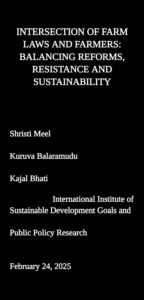Mental Health at work place and Labor Laws Introduction Mental health refers to our emotional, psychological, and social well-being. It influences how we think, feel, and act and plays a crucial role in how we handle stress, relate to others, and make choices. Nearly 60% of the global population is part of the workforce. All workers have the right to a safe and healthy work environment. Mental health is a key part of overall well-being, but many people still face stigma and challenges in accessing care. Issues like workplace stress, the impact of social media, and increasing anxiety among young people highlight the urgent need for supportive measures. Without effective support systems in the workplace, especially for those with mental health conditions, individuals may struggle to enjoy their jobs and perform at their best. Current Issues Mental health conditions are common. It’s estimated that 1 in 3 women and 1 in 5 men will experience major depression during their lives. Around the world, 1 in 7 young people aged 10–19 suffers from a mental disorder, contributing to 15% of the global disease burden for this age group. Suicide is the third leading cause of death for individuals aged 15 to 29. A stressful work environment, characterized by high demands and poor management, can lead to burnout and depression. The workplace can significantly influence employee’s mental health, especially in office settings where employers can make changes. A survey called the 360 Global Wellbeing Survey found that only 35% of respondents reported having flexible working hours and locations, despite this being a top priority for job seekers. According to an article from the Times of India, 71% of employees in India feel comfortable discussing mental health at work, but nearly 60% believe their managers or colleagues lack the tools to engage in these conversations effectively. Employers who ignore mental health miss out on a chance to reduce costs. Mental health issues like depression and anxiety can make chronic health conditions harder to manage, leading to increased healthcare expenses from more doctor visits, hospital stays, and medication use. Untreated mental health conditions can worsen chronic diseases, and vice versa. For instance, diabetes can double or triple the risk of depression, while those with depression are 60% more likely to develop diabetes. Additionally, presenteeism, where employees show up to work but are not fully productive due to mental distress, also increases costs. Laws The WHO’s Comprehensive Mental Health Action Plan (2013–2030) outlines principles, objectives, and strategies to promote good mental health in the workplace. This includes addressing social factors affecting mental health, such as living conditions and work environments; reducing stigma and discrimination; and improving access to evidence-based care through health service development, including occupational health services. In 2022, the WHO’s World Mental Health Report highlighted the workplace as a critical area for transformative action on mental health. India’s Mental Healthcare Act, 2017 (MHA) was enacted to provide a rights-based framework for individuals with mental illness, in line with India’s obligations under the United Nations Convention on the Rights of Persons with Disabilities (CRPD). While the MHA represents significant progress from the Mental Health Act of 1987, numerous challenges related to mental health in the employment sector remain unaddressed. India is preparing to introduce new labor codes, expected to bring major reforms to the employment sector. However, these new codes lack clear guidance on mental health in the workplace, focusing primarily on physical safety and welfare. There are no specific provisions addressing mental health, such as guidelines for managing workplace stress, mental health awareness programs, or protocols for handling mental health issues. This absence redirects attention to existing directives, legislation, and best practices from international bodies. Challenges in Implementation of Mental Health Laws 1. Stigma Attached to Mental Health: The stigma surrounding mental illness makes it difficult for individuals to seek help and for regulations to be enforced effectively. Mental health still receives less attention compared to physical health. Efforts to reduce stigma and increase awareness can help make mental health treatments more accessible. 2. Lack of Research Capacity: Addressing the gaps in mental health care is challenging due to insufficient research facilities for implementation and policy reform. More research is needed to determine effective ways to enforce mental health laws. 3. Shortage of Professionals and Services: A shortage of trained mental health professionals can hinder the effective execution and enforcement of mental health legislation. This lack of professionals can delay access to essential mental health services. The fragmented delivery of services also complicates the implementation and enforcement of mental health laws. Integrating mental health care into primary health services can help resolve this issue. 4. Resource Constraints: Implementing and enforcing mental health regulations can be especially difficult in vulnerable areas facing challenges such as armed conflict or developmental barriers. Resource constraints, including poor infrastructure and security issues, hinder these efforts. Governments and international organizations must provide resources to support mental health law implementation in such contexts. 5. Lack of Insurance: Obstacles to accessing mental health care, such as insufficient insurance coverage, can impede the implementation and enforcement of mental health laws. Ensuring adequate insurance coverage for mental health services is crucial to improving access to care. Solutions To ensure effective implementation, mental health policies should be developed as separate entities but integrated into health, social, and educational policies and strategic action plans. Mental health should also be included in national operational plans and essential health interventions. For example, in Kenya, a project funded by the UK NGO Nuffield Trust allocated funds to train psychiatric nurses in advocacy and planning skills to improve mental health care. Mental health issues require collaboration across various sectors, including education, social welfare, and the criminal justice system. Significant contributions from the health sector are essential to address mental health challenges, including providing access to medicines and support. Many generic medications are just as effective as newer, more expensive psychotropic drugs that may have better side effects but do not lead to significantly improved health outcomes. Uganda has











